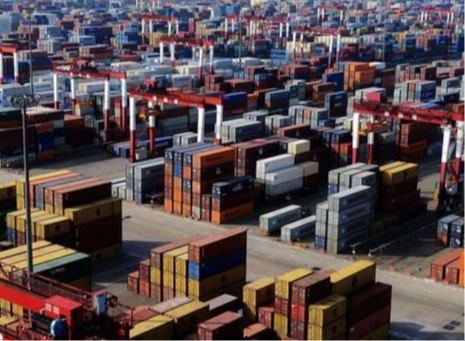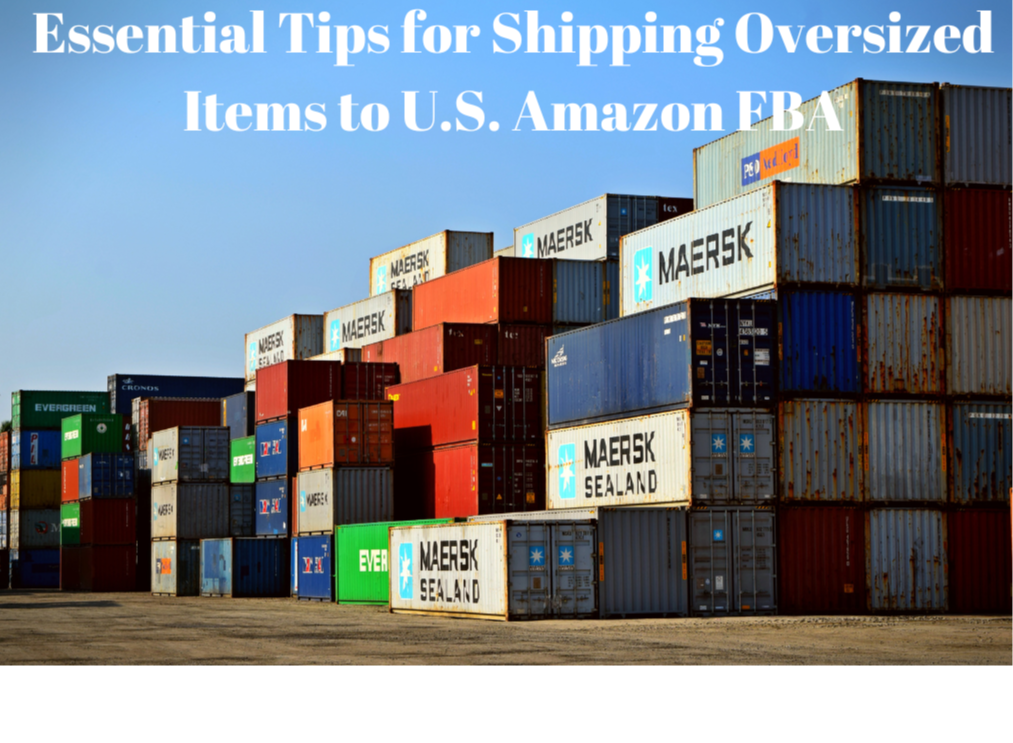The Bunker Adjustment Factor (BAF) surcharge is an additional fee levied by shipping companies to offset the volatility in fuel prices. This fee is crucial as it ensures stability in shipping costs despite fluctuations in the price of bunker fuel, which is essential for maritime operations.
Definition and Purpose
The Bunker Adjustment Factor, also known as Fuel Adjustment Factor or Bunker Surcharge, is a mechanism designed to mitigate the variations in the cost of ship fuel, commonly referred to as "bunker". BAF serves as the floating part of sea freight charges, allowing shipping companies to adjust their tariffs in response to fluctuations in fuel prices, ensuring that changes in bunker costs do not adversely impact their financial stability.
Calculation of BAF
The calculation of BAF is typically based on a straightforward formula: BAF = Fuel Prices x Trade Factor. Here, the trade factor encompasses various elements such as the average fuel consumption for a particular trade, taking into account factors like route, vessel direction, distance, transit time, and the weight of the cargo.
Influencing Factors
The amount of the BAF surcharge depends on several variables, including:
- Route and Distance: Longer routes and distances usually entail higher fuel consumption, which can result in a higher BAF surcharge.
- Vessel Direction and Transit Time: Directions and longer transit times requiring more fuel will impact the BAF computation.
- Weight and Type of Cargo: Heavier cargo and specific types of freight can affect the fuel consumption and, consequently, the BAF.
Quarterly Adjustments
BAF charges are often adjusted quarterly to reflect changes in fuel prices. Historically, these adjustments were standardized by the Transpacific Stabilization Agreement (TSA) using Brent crude oil as a benchmark. However, following the disbanding of the TSA in 2018, ship operators began setting their bunker surcharges independently, under the supervision of the European Commission.
Practical Applications and Impact
By examining trade routes from Asia to Europe and Asia to North America, it has been observed that the practice of applying the BAF effectively cushions ocean carriers from negative impacts due to fuel price fluctuations. This makes the BAF a powerful tool for altering the incentive structure that carriers face, ensuring they can manage operational costs efficiently.
Industry Impacts and Future Expectations
The implementation of regulations such as the IMO 2020, which mandated a significant reduction in sulphur emissions from 3.5% to 0.5%, has had a considerable impact on BAF calculations. To comply with these regulations, carriers have had to either transition to low-sulphur fuels, install exhaust scrubbers, or apply for waivers, all of which introduce additional costs. As such, the BAF surcharge has had to be recalculated to account for these increased fuel charges, leading to a rise in overall shipping costs.
Conclusion
In summary, the Bunker Adjustment Factor surcharge is a vital component of maritime shipping operations. It provides a flexible framework to account for fuel price fluctuations, enabling carriers to stabilize costs and maintain financial viability amidst changing market conditions. As environmental regulations evolve and fuel technologies advance, the BAF will continue to play a crucial role in the global shipping industry.
2024-05-07
Exploring the Functions of Overseas Warehouses and Their Operational Dynamics
"The existence of overseas warehouses has brought great convenience to cross-border e-commerce logistics. More and more cross-border trade is gradually inseparable from overseas warehouses. So, do you know what the functions of overseas warehouses are? , how do overseas warehouses generally operate?1. What is the Function of Overseas Warehouse?The functions of overseas warehouses are as follows:1) Delivery function: Overseas warehouses can provide delivery services for cross-border e-commerce sellers. Express delivery in the destination country will be much cheaper than domestic express delivery. However, with the continuous development of cross-border e-commerce in recent years, if it is still Based on the original business model of small parcel delivery, overseas warehouses will face rising warehouse operating costs and labor costs. At the same time, warehousing automation, FBA competition and Amazon’s last-mile layout will have a negative impact on the development of enterprises. Wait for a bigger impact.2) FBA returns and exchanges, etc.: Overseas warehouses with single functions can easily be replaced. In addition, operating costs continue to grow and profit margins continue to be diluted, which directly affects the development of enterprises. It is necessary to evolve from the original drop shipping idea to a multi-functional logistics transfer center. Auto Shipping provides one-stop overseas warehousing services, including FBA returns and exchanges, transfers, reprinting or labeling, FBA product testing, cartoning, payment of customs duties, insurance, etc.3) Bonded function: When an overseas warehouse is approved by the customs to become a bonded warehouse, its functions and uses are broader, and it can simplify customs clearance processes and related procedures. At the same time, re-export trade can be carried out in bonded warehouses, using the location of the overseas warehouse as a third country to connect the seller and buyer countries. This method can effectively avoid trade sanctions. In bonded overseas warehouses, simple processing and other corresponding value-added services can also be performed, which can effectively enrich warehouse functions and enhance competitiveness.4) FBA transfer function: first send the goods to the overseas warehouse in the destination country by air or sea, and then, if the warehouse capacity allows, require the overseas warehouse to affix the FBA label and send it to FBA by local express, so as to reduce some links risk of delay.5) Transportation resource integration function: Overseas warehouse system providers feel that due to the relatively small number and high frequency of international trade B2C orders, in order to better integrate the upstream supplier resources of domestic warehouses and the downstream customer resources of foreign warehouses , to meet the high-time delivery requirements of logistics, using domestic warehouses as the end point of joint distribution and overseas warehouses as the starting point of joint distribution, to achieve effective integration of transportation resources, achieve scale effects of transportation, and reduce distribution costs.Click here learn more amazon fba warehouse location:https://globalshippingauto.com/amazon-warehouse-locations-usahttps://globalshippingauto.com/amazon-warehouse-locations-canadahttps://globalshippingauto.com/amazon-warehouse-locations-mexico2. How do Overseas Warehouses Generally Operate?Overseas warehousing services refer to one-stop control and management services for cross-border e-commerce sellers to store, sort, pack and deliver goods in the country of sales destination. To be precise, overseas warehousing generally includes three parts: first-leg transportation, warehousing management, and last-leg transportation (local distribution). The specific operating procedures for overseas warehouses are as follows:1) First-leg transportation: Cross-border e-commerce sellers transport goods to Auto’s overseas warehouse in the destination country through other methods such as sea transportation, air transportation, land transportation or small parcels.2) Warehousing management: Sellers use the logistics information system to remotely operate overseas warehouse goods and manage inventory in real time.3) Last-mile transportation (local delivery): Based on the order information, the overseas warehousing center delivers the goods to the customer through local post or express delivery.If cross-border e-commerce sellers choose our Auto overseas warehousing service, they must make full use of its various functions to make their cross-border e-commerce more cost-effective, worry-free, time-saving and labor-saving.3. What are the Advantages and Disadvantages of using Overseas Warehouses?Advantage1. Low cost increases profit margins: Take Nacheng International Logistics’ overseas warehouses in the United States and Russia as examples. The overseas warehouses in the United States provide a 30-day free warehousing discount, and the Russian overseas warehouse provides a 90-day free warehousing discount.2. Personalized packaging: Sellers can flexibly choose packaging that suits their products, reducing the damage rate of subsequent deliveries and reducing the return and exchange ratio.3. Flexible return and exchange processing: Overseas warehouses provide return and exchange services for goods.Shortcoming1. Enterprises that have just entered the e-commerce field should not choose overseas warehouses when the shipment batch is small and orders cannot be formed quickly during the market exploration stage. Although Amazon FBA compresses profit margins, it can help sellers increase product exposure. Once the products are recognized by the market, they will consider increasing profits.2. Amazon Prime members can enjoy free 2-day delivery in the United States. Overseas warehouses currently cannot guarantee 2-day delivery within the United States, and will need to charge a certain delivery fee.3. Not all products are suitable for "overseas warehouses". Generally speaking, the products suitable for "overseas warehouses" mainly include:(1) Products with large size and weight: Since the specifications of these products in small packages and dedicated line mail will be limited, and international express delivery is very expensive, using overseas warehouses will break through the product specification restrictions and reduce logistics costs.(2) Products with high unit price and gross profit: This is because high-quality overseas warehouse service providers can control the damage rate and loss rate to a very low level, reducing risks for sellers selling high-value goods.(3) High cargo turnover rate: what we often call best-selling products. For best-selling products, buyers can process orders more quickly through overseas warehouses and withdraw funds; for slow-moving products, corresponding warehousing fees will be incurred while occupying funds. Therefore, in comparison, overseas warehouses are more suitable for products with high turnover rates. "ConclusionSelecting a reliable freight forwarding company is crucial for cross-border e-commerce sellers, as it directly impacts the efficiency and safety of product transportation. A high-quality freight forwarder can ensure goods are delivered quickly and safely across the globe, while also helping sellers minimize costs and avoid potential logistical issues. The value protection service provided by Auto Shipping ensures that in the event of any loss or damage during transport, the freight forwarding company will offer compensation, thereby reducing the risk for the seller.
2024-06-13
The Advantages of Trading Companies Over Factories
When selecting a supplier for your import needs, choosing between trading companies and factories is a critical decision that can significantly impact your business operations. While factories might offer the advantage of lower prices, trading companies provide a range of benefits that often make them a better choice for many buyers. Below are several reasons why trading companies can be more advantageous than factories.Enhanced Customer ServiceTrading companies excel in customer service, which is a crucial aspect of the sourcing process. Their primary focus is on the customer, ensuring a smoother communication process and attentive service. This customer-centric approach makes it easier to address any issues or customization needs more effectively compared to factories, which are primarily focused on production.Broader Product RangeOne of the primary advantages of trading companies is their capacity to offer a broader range of products. Unlike factories, which typically specialize in specific products, trading companies work with multiple factories, making it possible for them to provide a diverse array of products. This variety is particularly beneficial for buyers looking to source different items in smaller quantities.Lower Minimum Order Quantities (MOQ)Trading companies generally offer lower minimum order quantities compared to factories. This can be extremely valuable for small businesses or those needing smaller product batches. Factories usually prioritize large orders, which can lead to longer wait times for smaller orders. Trading companies, on the other hand, can accommodate smaller orders more readily.Reduced RiskWorking with trading companies can also reduce the risks associated with international trading. These companies are adept at managing the complexities of sourcing from multiple factories, ensuring consistent product quality and reliability. This is crucial in an environment where factories can sometimes go bankrupt or change operations unexpectedly.Professional CommunicationTrading companies often employ staff who are well-versed in international trade, fluent in multiple languages, and experienced in handling international business transactions. This proficiency minimizes the risk of misunderstandings and errors, enhancing the overall communication process. Factories, conversely, may not have staff with the same level of language skills or international business acumen.Specialized ServicesTrading companies frequently offer value-added services that can significantly enhance the purchasing experience. These services can include quality control, consolidation of orders from multiple factories, and assistance with export documentation. By taking on these additional responsibilities, trading companies make the sourcing process more streamlined and efficient for buyers.Flexibility and StabilityLarge trading companies tend to be more flexible and stable than individual factories. They can offer better payment terms and are less likely to be affected by sudden disruptions. This stability is essential in ensuring that buyers receive their products on time and at the agreed-upon quality.ConclusionWhile factories may provide cost advantages, trading companies offer a plethora of benefits that can make them a more effective and reliable option for many buyers. Their focus on customer service, broader product range, lower MOQ, reduced risk, professional communication, specialized services, and overall flexibility and stability make them an invaluable partner in the sourcing process. By choosing to work with a trading company, buyers can streamline their importing processes and enhance their overall business operations.By considering these factors, businesses can make informed decisions that align with their specific needs and goals, ensuring a smoother and more profitable importing experience.
2024-12-03
Essential Tips for Shipping Oversized Items to U.S. Amazon FBA
Shipping oversized items to Amazon FBA isn’t as straightforward as just packing your goods and sending them off.Whether you’re handling your own shipments or working with a China freight forwarder, there are rules and regulations you absolutely need to follow to avoid costly mistakes.Imagine this: You ship a 120-pound couch without the right labels or packaging, and it gets rejected at the FBA warehouse.Or, even worse, you end up paying hefty fees for non-compliance. This isn’t just a hassle – it’s a drain on your profits.That’s why it’s crucial to know the ins and outs of oversized shipping before you even pack your boxes. Let’s dive into the essential tips for making sure your oversized items make it to Amazon’s FBA warehouse without any issues.Understand Amazon’s Size and Weight RulesAmazon loves rules, and oversized items have their own playbook. Mess this up, and your shipment could get rejected, cost more, or take forever to check in. Here’s what you need to know:Size LimitsStandard-sized boxes: Any side can’t exceed 64 centimeters.Oversized items: Must ship in individual boxes – no bundling multiple oversized products together.Packaging after assembly: If your item is already pushing size limits, make sure the packaging doesn’t tip it over Amazon’s maximum size requirements.Weight RegulationsItems over 100 lbs (45 kg): Add a “Mech Lift” label so everyone knows a machine is required.Items 50–100 lbs (22.5–45 kg): Use a “Team Lift” label to indicate team handling.Jewelry and watches: Keep the box weight under 40 lbs (18 kg). Yeah, they’re picky like that.Nail the Packaging – No Room for ErrorsPackaging isn’t just about looking professional – it’s about surviving the journey.Here’s How to Pack Like a Pro:Use six-sided hard boxes – no floppy cardboard that crumbles under pressure.Clear old labels before slapping on new ones. Trust me, mixed-up barcodes are a nightmare.Add Amazon-specific labels on every box – these are non-negotiable.For bulk shipments? Label both the outer big box and every inner box.Bonus Tip:Fill empty spaces with high-quality padding to prevent internal movement. Shipping is like bumper cars – your items will take a hit, but good padding keeps them intact.Pre-Label and Prep Like It’s Your Job (Because It Is)Amazon’s system relies on labels. Without proper prep, your inventory could disappear into the void.Individual item packaging: Use bubble wrap, foam, or whatever it takes to keep your products secure.Right-sized boxes: Avoid oversized boxes with too much empty space – they’re more prone to damage.Unique labels: Every item and box needs its own unique label to avoid mix-ups.If You’re Using Pallets, Do It RightPallets aren’t just for giant warehouses. They’re your best friend for heavy-duty shipping. But Amazon’s picky about this too:Pre-schedule your pallet delivery. Show up unannounced? That’s a quick way to get turned away.Make sure your pallets meet Amazon’s size and material standards.Label both pallets and individual boxes.Cost Control – Don’t Bleed MoneyShipping oversized items is already pricey, but you can still control your costs. Here’s how:Dimensional weight pricing: Carriers charge by size AND weight. Pack efficiently to avoid paying for wasted space.Use freight forwarders that specialize in FBA to save on international shipments.Try using Amazon’s partnered carrier programs for bulk discounts.Avoid Rookie MistakesDon’t learn the hard way. Here are the most common mistakes sellers make – and how to avoid them:Ignoring weight and size rules: Even 1 cm over the limit could trigger extra fees or rejection.Old labels: Forgetting to clear them leads to massive delays.Insecure packaging: Fragile items WILL get damaged if not properly packed.Always Follow Amazon’s Rules – No ShortcutsAmazon doesn’t mess around. If you cut corners, expect rejected inventory, hefty fees, or worse – your account suspended.Follow their rules for:Safety requirementsLabeling and prepSpecific product restrictionsLet’s Make This RealImagine this: You ship a 120 lb couch to Amazon without a “Mech Lift” label. It arrives damaged, gets flagged as unsafe, and you’re charged return fees. Ouch, right?Now imagine you followed the rules. Same couch arrives intact, Amazon stocks it seamlessly, and you start making money. The choice is obvious.FAQsCan I bundle multiple oversized items in one box?Nope. Amazon requires oversized items to ship individually.What’s the most cost-effective way to ship oversized items?Use freight forwarders or Amazon’s partnered carrier programs. These can save you money, especially for international shipments.What happens if my shipment doesn’t meet Amazon’s requirements?Your items could be rejected, returned, or even destroyed – and you’ll foot the bill.Final WordsShipping oversized items to Amazon FBA isn’t rocket science, but it does take some effort.Get the size and weight right. Nail the packaging. Follow Amazon’s rules like your business depends on it – because it does.Start small, test your process, and keep optimizing.Shipping smarter means happier customers, smoother operations, and more money in your pocket.And who doesn’t want that?



